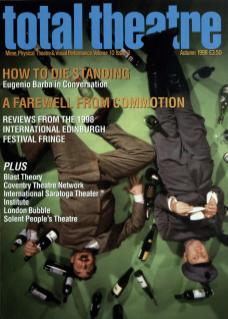Watching the Apollo 11 moon landing being performed by two men – one who only uses his hands and the other who provides a simple commentary – does not seem like a promising prospect. However, this brief show is a flight into the rich realm of the imagination.
Andrew Dawson's hands, performing against a black table top, uncannily bring to life the whole of the momentous event. Just as I remember watching the TV pictures of the moon landing with awe as a small boy in 1969, I was spellbound by the images in this performance. With the simplest of gestures, Dawson's hands become the moon, a flaming tail of a rocket, or a helicopter with blades twirling. His fingers represent the vast distance between the table top and his orbiting hand, signifying the moon. Even characters make their own way into the unfolding story: the reluctant astronaut, last to the launch, is even last to get out of the rescue helicopter.
The simple text, delivered clearly and precisely by Gavin Robertson from a lectern, links perfectly with the visuals provided by Dawson. The two performers exchange little interchanges seamlessly. All this is backed by a stirring soundtrack, which includes many phrases that have now passed into history. This is a no thrills, dextrous presentation of visual storytelling skills. It strips theatre back to what is possible at the simplest level. It is ironic that one of mankind's greatest technological achievements of the twentieth century can be brought to life so vigorously by the most very basic of man's tools, his hands. This is one great step for visual theatre.

